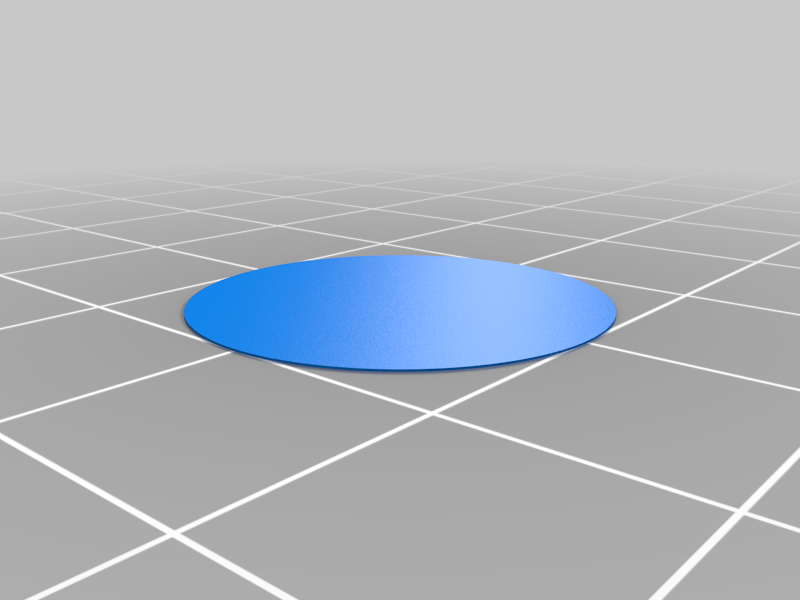
Bed Level and configuration - single layer disc and instructions
thingiverse
A Quick Test to Check Nozzle Height Following a Bed Level and Mesh Config That Takes Only Minutes to Print. To print on glass without adhesive using PLA or PETG, follow the process below, which takes only a few minutes. The single disk file can be opened multiple times in Cura and placed on bed as required for checks. I put one disc in each corner and one in the center, with an example showing a sixth disc in the center, furthest from the Z-screw on my Ender 5, which is a spot that needs attention. CE5_Single_Layer_Disc_5 is the typical layout used as follows: 1. Level bed. 2. Calibrate and store mesh adjustments. 3. Calibrate nozzle height. Run tests with a warm bed and hotend at PLA settings (60/205) - results still work at higher PETG temps (82/230). To level and configure properly: 1. Level at four corners first using a feeler gauge and the bed wheels. For all measurements, use a 0.1mm feeler gauge rather than a random piece of paper. Don't let the nozzle come down on the gauge; instead, slide it under after it comes down. Go for consistency here - don't worry too much about height. We want the bed level; we can adjust nozzle height later. 2. Next, run mesh leveling - if doing this manually, use the gauge in the same way but adjust the bed height on the control board to generate a Z offset for each point. Don't touch the bed wheels. Once done, the bed is now level with a set of mesh z adjustments. We should only need to adjust the gap between the nozzle and the bed overall. 3. Nozzle height: I test by printing five 20mm discs one layer thick - one disc in each corner and one in the center. Use a skirt. Check each disc, leaving others on the bed. Ensure lines in each disc are fused to their neighbors. This is important - see the pics; use a solid colorful if possible. Hold the printed disk up to the light and see if you can see through or even pull the lines apart. If you see between the lines, the bed is too far from the nozzle. Turn the bed wheel one-eighth of a turn up or adjust your overall Z offset to take the nozzle a little closer to the bed. If these are smeared too thin, the bed is too close to the nozzle - one-eighth turn down. If one disc is out, you missed this in mesh leveling - sorry to say you'll have to go back and correct the mesh. I cheat sometimes and just tweak the appropriate corner, but this may not work. So, loose see-through lines mean the bed is too low. Smeared lines in the skirt or disc mean the bed is too high.
With this file you will be able to print Bed Level and configuration - single layer disc and instructions with your 3D printer. Click on the button and save the file on your computer to work, edit or customize your design. You can also find more 3D designs for printers on Bed Level and configuration - single layer disc and instructions.
